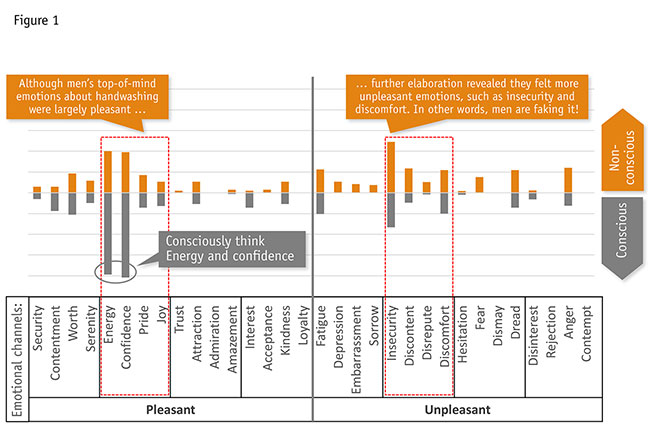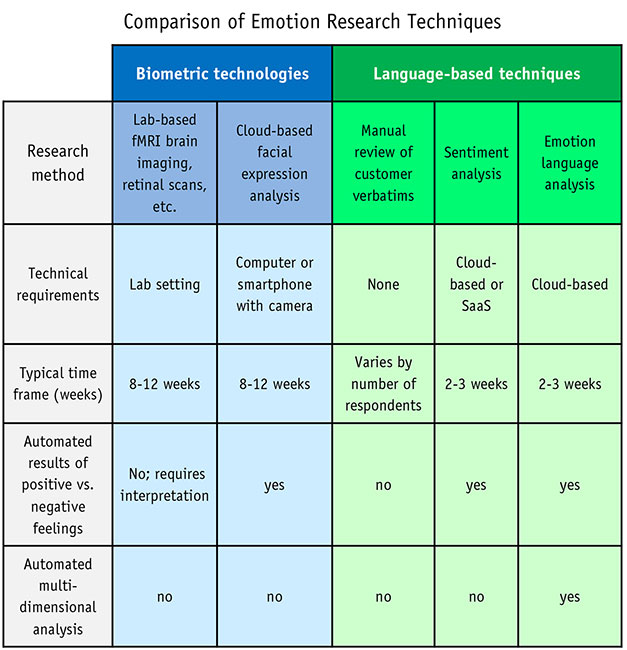The truth is in the telling
Editor's note: Chuck Bean is a partner at The Martec Group, a Chicago-based research firm.
 Scientists have long known that there is often great disparity between our internal and external selves – how people say they feel about something and their actual, genuine feeling. It’s not that we’re deceptive – it’s often a subconscious process. You might say it’s just human nature. This disparity has been measurable using complex fMRI brain imaging, biometric evaluations, facial scanning technology and other physiological and psychological research techniques. Naturally marketers quickly realized the potential in these technologies: Rather than relying on educated guesses and interpretation, branding and marketing initiatives could be tested with amazing accuracy. Thus, the birth of emotion research.
Scientists have long known that there is often great disparity between our internal and external selves – how people say they feel about something and their actual, genuine feeling. It’s not that we’re deceptive – it’s often a subconscious process. You might say it’s just human nature. This disparity has been measurable using complex fMRI brain imaging, biometric evaluations, facial scanning technology and other physiological and psychological research techniques. Naturally marketers quickly realized the potential in these technologies: Rather than relying on educated guesses and interpretation, branding and marketing initiatives could be tested with amazing accuracy. Thus, the birth of emotion research.
Lab-based techniques have two major limitations: They are complicated to use and they are not easily scalable to large customer groups. It turns out another way of getting the same insights, without the need for such complex equipment, exists in the form of language-based emotion research techniques. These methods rely on comprehensive word-association dictionaries along with powerhouse computing to dig into what subjects declare via written or verbal response to decipher their true, authentic sentiments, going beyond their surface-level responses.
Here’s an example: An emotion language analysis study was conducted on behalf of a hand-soap manufacturer to find out how consumers feel about handwashing. At first, respondents in this study described their feelings using words associated with pleasant emotions such as security and confidence. But then it got more interesting: As the consumers elaborated further, some surprising differences emerged between women’s and men’s feelings. To most women, the idea of handwashing triggered consistently pleasant emotions. But when men were asked to elaborate, most of their language revealed that they actually felt handwashing was an annoying chore and they began using words associated with unpleasant feelings such as anger and dread. This dichotomy led to a valuable segmentation opportunity.
While marketers of consumer goods and services were first to use emotion research, marketers of industrial products have begun to take a closer look at how emotions influence B2B decision-making, as discussed in Andrew Dalglish’s recent blog post on Quirk’s Web site (“Yes, even B2B buyers are influenced by emotion”). This type of research will continue advancing as new technologies offer scalable and cost-effective methods.
Difficult to interpret
As we’ve seen, the earliest research on underlying emotions was mainly confined to laboratory settings, where sophisticated technology such as fMRIs and biometric evaluations was used to gauge customers’ responses to advertisements and other stimuli. While this research could be useful in measuring consumers’ level of excitement, the responses could be difficult to interpret by marketers, requiring scientific sherpas to explain results, particularly as findings were socialized beyond the core research team. More captious is that machine-based evaluations are time-consuming and nearly impossible to scale financially. Unlike surveys and panels, or even one-on-one interviews, lab-based techniques are expensive by orders of magnitude – imagine strapping in 5,000 people to an fMRI machine for questions about New Coke. While some day this approach may be possible through advances in technology, today it’s a non-starter for most marketing applications that require scale.To overcome these limitations, researchers have developed new techniques that use language to assess what’s on customers’ minds and determine the underlying emotional tones. Here are some examples of these techniques, which use natural language processing (NLP):
- concept analysis or text analytics, which can identify common themes in text collected through surveys, reviews, customer verbatims and online feedback;
- sentiment analysis, which assesses whether customers’ comments are positive, negative or neutral; and
- emotion language analysis, which identifies and evaluates both surface and underlying emotions along multiple dimensions.
You can develop your own taxonomy and framework to evaluate customers’ feedback that you have already collected. For ideas on how to do that, see “Scaling the data mountain: A practitioner’s guide to unlocking insights from customer feedback,” by Kieser and Williams, Quirk’s, January 2017. Or you can use one of the new cloud-based tools for data collection that has built-in algorithms for evaluating how customers’ language reflects their underlying feelings.
The more they reveal
As one example of these methods, emotion language analysis (ELA) was developed by a team of experts in psychiatry and information technology based on the widely accepted clinical principle that the more patients talk, the more they reveal. The ELA approach has been applied to a variety of emotion research techniques including a cloud-based gamification survey that asks customers to respond to a simple question such as, “How do you feel about X?” (There are a number of techniques for employing emotion research. See the accompanying comparison chart.)
Customers begin by identifying the first words that come to mind to describe their feelings. Then as they proceed through the process, they refine their responses in a variety of ways by identifying additional words associated with their emotions. This flow of words begins to widen the stream of emotional undertones detected. Linguistic algorithms and a 10,000-word “emotion dictionary” categorize words into “emotion channels,” so the emotions can be analyzed along multiple dimensions to diagnose the customers’ level of interest, engagement and passion.

The contrast between customers’ initial top-of-mind responses and their further elaborations can be illuminating. The chart in Figure 1 presents findings from the handwashing study mentioned earlier. The gray bars in the bottom half of the chart reflect the initial words that men used to describe their top-of-mind feelings, which you can see are primarily positive (as shown in the lower-left quadrant). But when asked to elaborate with other associated words (as shown in the top half of the chart), men began to use more words linked to unpleasant feelings (as shown in the gold bars in the upper-right quadrant).
These findings presented an important segmentation opportunity for the hand-soap producer: Its appeals to women could focus on fragrance and skincare benefits, while it could offer men time-saving solutions such as touch-free soap dispensers.
An opportunity
As we’ve discussed, the data shows that customers tend to rely more on their hearts than their heads when it comes to making purchase decisions. Rather than this illogical behavior being a problem, it can be an opportunity for marketers to tweak their strategies and better reach their customers. Here are a few of the areas where language-based emotion research can lead to important insights for your marketing strategy:
- Brand positioning. What emotions do customers associate with your brand and your competitors’ brands? Does your brand trigger emotions linked to the attributes that are most important for brand leadership?
- Brand image. Does the brand image you’re developing align with a desirable emotional image for the brand? Your brand could be the market leader but if customers harbor negative emotions toward the brand, your market position could be vulnerable.
- Brand messaging. Finding the language that will hit the right emotional triggers can be key to the success of your advertising and promotional campaigns.
- Customer experience. Emotion research can give you rich insights about the customer’s journey, such as where your customers are developing – or losing – essential emotional connections with your brand, product or organization.

Ongoing monitoring
Customers’ emotions are a moving target, rippling in response to individual circumstances and market forces, which is why ongoing monitoring of emotions is a critical part of emotion research. After you’ve performed an initial assessment of customers’ feelings and responded to the implications of those findings, you should develop a plan for monitoring customers’ emotions in response to changes in your strategy (and to your competitors’ actions). With the new language-based emotion research techniques and tools, marketers can move one step closer to reading the minds and hearts of customers.
